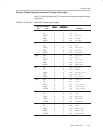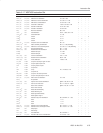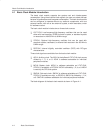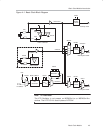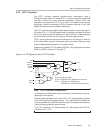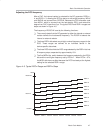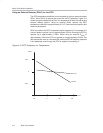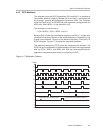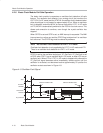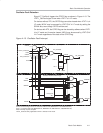
Basic Clock Module Operation
4-4
Basic Clock Module
4.2 Basic Clock Module Operation
After a PUC, MCLK and SMCLK are sourced from DCOCLK at ~800 kHz (see
device-specific datasheet for parameters) and ACLK is sourced from LFXT1
in LF mode.
Status register control bits SCG0, SCG1, OSCOFF, and CPUOFF configure
the MSP430 operating modes and enable or disable portions of the basic clock
module. See Chapter System Resets, Interrupts and Operating Modes. The
DCOCTL, BCSCTL1, and BCSCTL2 registers configure the basic clock
module
The basic clock can be configured or reconfigured by software at any time
during program execution, for example:
BIS.B #RSEL2+RSEL1+RSEL0,&BCSCTL1 ;
BIS.B #DCO2+DCO1+DCO0,&DCOCTL ; Set max DCO frequency
4.2.1 Basic Clock Module Features for Low-Power Applications
Conflicting requirements typically exist in battery-powered MSP430x1xx
applications:
- Low clock frequency for energy conservation and time keeping
- High clock frequency for fast reaction to events and fast burst processing
capability
The basic clock module addresses the above conflicting requirements by
allowing the user to select from the three available clock signals: ACLK, MCLK,
and SMCLK. For optimal low-power performance, the ACLK can be
configured to oscillate with a low-power 32,786-Hz watch crystal, providing a
stable time base for the system and low power stand-by operation. The MCLK
can be configured to operate from the on-chip DCO that can be only activated
when requested by interrupt-driven events. The SMCLK can be configured to
operate from a crystal or the DCO, depending on peripheral requirements. A
flexible clock distribution and divider system is provided to fine tune the
individual clock requirements.




